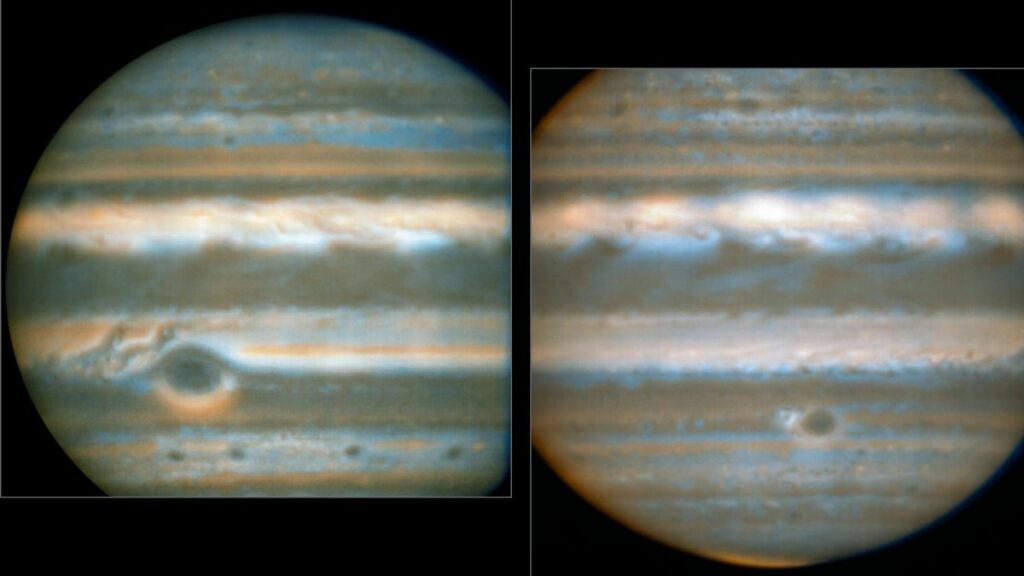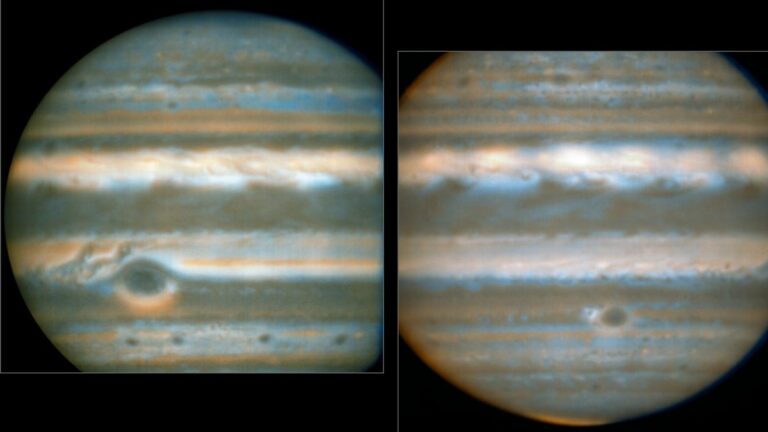A 40-year research reveals that something peculiar is occurring in Jupiter’s atmosphere.
The planet doesn’t have seasons.
According to a recent research, Jupiter’s atmosphere is experiencing some strange phenomena.
Jupiter is the biggest planet in the solar system, and observations of its atmosphere over the past forty years by spacecraft and ground-based observatories have revealed peculiar weather patterns, including hot and cold phases over its lengthy year (equivalent to 12 Earth years). But unlike Earth, Jupiter doesn’t experience seasonal fluctuations.

On Earth, the tilt of the planet’s axis toward the plane of its orbit around the sun causes weather to change from winter to spring to summer to fall. Different regions of the world receive differing quantities of sunshine throughout the year as a result of this 23-degree tilt. However, Jupiter’s axis is just 3 degrees slanted toward the huge planet’s orbital plane, thus throughout the course of its lengthy year, the quantity of sunlight that reaches various portions of Jupiter’s surface hardly varies. Nevertheless, the current study discovered recurring temperature fluctuations all throughout the planet’s cloud-covered surface.
Leigh Fletcher, an astronomer from the University of Leicester in the United Kingdom and a co-author of the new article, stated in a NASA release that “We’ve solved one half of the riddle now, which is that the atmosphere displays these natural cycles” (opens in new tab). “We need to examine both above and below the foggy layers to understand what’s driving these patterns and why they occur on these specific timescales,” the author writes.
The research team has discovered hints that the phenomenon known as teleconnection may be involved in these atypical seasons. Teleconnection is the term used to explain periodic changes in a planet’s atmospheric system that take place concurrently in regions of the globe that appear to be disconnected and may be thousands of miles or kilometers away.
Since the 19th century, teleconnection has been noticed in the Earth’s atmosphere, most notably in the well-known La Nina-El Nino cycle, also known as the Southern Oscillation. According to the National Oceanic and Atmospheric Administration, during these occurrences, variations in the trade winds of the western Pacific Ocean are correlated with changes in rainfall throughout much of North America (NOAA).
In their latest study, scientists discovered that on Jupiter, some latitudes in the northern hemisphere experience temperature increases, while corresponding latitudes in the southern hemisphere experience temperature decreases—almost like a mirror image.
Glenn Orton, a planetary scientist at NASA’s Jet Propulsion Laboratory in California and the study’s principal author, said in a release, “That was the most startling of all.”
He remarked, “We discovered a relationship between how the temperatures fluctuated at extremely far latitudes. It’s comparable to an occurrence on Earth when weather and climate patterns in one area may noticeably affect weather in another, with the patterns of variability appearing to be “teleconnected” across great distances through the atmosphere.
The data also showed that while temperatures rise in Jupiter’s stratosphere, its uppermost layer of atmosphere, they fall in the troposphere, its lowest layer of atmosphere, where weather phenomena like the planet’s strong storms take place.
The Very Large Telescope in Chile, NASA’s Infrared Telescope Facility, and the Subaru Telescope at the Mauna Kea Observatories in Hawaii all contributed data to the research, which covered the period from 1978 onward. Data from other spacecraft, such as the deep-space Voyager probes that passed Jupiter in 1979 and the Cassini mission that passed Jupiter in 2001 on its route to study Saturn, was also utilised by the researchers.
If we can establish a link between cause and effect in Jupiter’s atmosphere, measuring these temperature variations over time would eventually lead to the creation of a comprehensive Jupiter weather prediction, according to Fletcher. The much more important question is whether we will ever be able to apply this to other massive planets to see whether similar patterns emerge.
Previously, researchers understood that the atmosphere of Jupiter included bands of warmer areas, which appear as brownish hues, and colder parts, which look as lighter hues. For the first time, the current study, which spans three Jovian years, demonstrates how these patterns alter over longer timescales.
The study was published in the journal Nature Astronomy on Monday (Dec. 19).
Do not forget to share your opinion with us to provide you with the best posts !




0 Comments